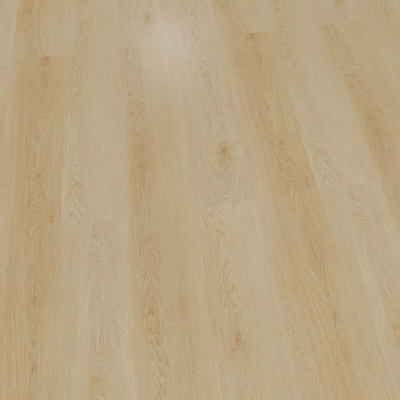Best SPC Flooring for Kitchen
Best SPC Flooring for Kitchen: A Complete Engineering & Buyer’s Guide (2025)
Introduction
The kitchen is the heart of every home—but it's also one of the most high-traffic, moisture-prone, and spill-heavy environments. Choosing the best SPC flooring for kitchens requires a balance of technical performance, safety compliance, material quality, and long-term durability.
In this comprehensive guide, we’ll help you navigate the specifications, standards, and performance data that define high-quality SPC flooring for kitchen applications—without relying on brand names. If you're remodeling or sourcing flooring for a commercial kitchen or residential project, this article is engineered to help you make a confident and code-compliant decision.
What is SPC Flooring?
SPC (Stone Plastic Composite) flooring is a rigid core luxury vinyl flooring made of limestone powder, polyvinyl chloride (PVC), and stabilizers. Its multilayered structure typically includes:
Wear Layer (UV-coated): Scratch-resistant surface
Decorative Film: Photorealistic wood or stone texture
SPC Core: High-density, waterproof composite
Underlayment: IXPE/EVA foam for sound insulation
Its rigid core and water-impermeable structure make SPC flooring an ideal candidate for kitchen environments.
Key Performance Factors for Kitchen SPC Flooring
To qualify as the best SPC flooring for kitchens, a product must meet several technical requirements:
1. Waterproofing
SPC flooring should have 100% waterproof core and sealed click-lock edges.
Must withstand prolonged exposure to moisture from spills, splashes, and mopping.
2. Slip Resistance
Kitchen floors often become slippery due to oil or water.
SPC must meet or exceed ASTM C1028 or EN 13893 for dynamic coefficient of friction (≥ 0.30 dry, ≥ 0.42 wet).
3. Durability & Wear Resistance
Look for SPC with an AC4 or AC5 wear layer, tested according to EN 13329 or ASTM D4060.
Ideal wear layer thickness: 0.3mm–0.7mm (12mil–28mil).
4. Stain & Heat Resistance
Must resist discoloration from turmeric, coffee, red wine, oil.
Heat resistance rating of at least 130°C (266°F) to handle kitchen proximity to ovens and stoves.
5. Ease of Cleaning
Smooth embossed textures are easier to clean but must retain slip resistance.
Compatibility with household detergents and pH-neutral disinfectants is essential.
6. Dimensional Stability
Kitchen floors may experience temperature/humidity swings.
SPC with ≤ 0.05% dimensional change (per ISO 23999) ensures reliable expansion/contraction control.
Industry Standards and Certifications
The best SPC kitchen flooring should be tested and certified according to:
| Standard | Purpose |
|---|---|
| ISO 10582 | Resilient floor coverings - specifications |
| ASTM F3261 / ASTM D4060 | Abrasion resistance |
| EN 13501-1 | Fire classification (minimum Bfl-s1) |
| FloorScore® or Greenguard | Low VOC emissions for indoor air quality |
| CE Marking / ISO 9001 Manufacturing | Quality assurance in production |
Recommended Technical Specs for Kitchen SPC Flooring
| Property | Minimum Requirement for Kitchen |
|---|---|
| Thickness | ≥ 4.0mm (5mm–6.5mm preferred) |
| Wear Layer | ≥ 0.3mm (12mil) |
| Core Density | ≥ 2000 kg/m³ |
| Fire Resistance | Bfl-s1 or better |
| Slip Resistance | ≥ R10 (DIN 51130) |
| Sound Insulation | IXPE/EVA underlayment ≥ 1.0mm |
Installation Considerations in Kitchens
Subfloor Preparation: Clean, dry, and level to <3mm deviation over 2 meters.
Expansion Gap: Leave 5–10mm around walls to accommodate temperature change.
Moisture Barrier: Not required under SPC, but vapor barrier film may improve lifespan.
Click-Lock System: Use UNILIN or Välinge patented lock systems for strong joint integrity.
Common Questions
Q1: Can SPC flooring handle kitchen spills?
Yes. SPC is fully waterproof and ideal for kitchens. However, it's advisable to clean spills quickly to avoid seam infiltration.
Q2: Will kitchen appliances damage SPC floors?
Place protective pads or appliance trays under heavy equipment like refrigerators to avoid point load deformation. Look for EN 433 standards compliance.
Q3: Can SPC flooring be used in open kitchen-dining combos?
Absolutely. SPC provides seamless transition across zones. Use transition strips at doorways or between different flooring materials.
Q4: Is SPC flooring safe for indoor air quality?
Yes—provided it's FloorScore® certified, free of heavy metals, and complies with ISO 16000-9 (low formaldehyde emissions <0.05 ppm).
Case Study: Residential Kitchen Installation
Project Size: 32 sqm kitchen + pantry
Material: 5.5mm SPC with 0.5mm wear layer
Installation Time: 6 hours (2 installers)
Outcome: Waterproof, seamless, and warm underfoot
Feedback: Reduced cleaning time, no warping near dishwasher
Best Surface Finishes for Kitchen SPC Flooring
Embossed in Register (EIR): Enhances texture, slip resistance
Matte UV Finish: Reduces glare and fingerprints
Anti-Bacterial Coating: Optional, ideal for food prep zones
Summary Table: Ideal SPC Features for Kitchens
| Feature | Recommended Specification |
|---|---|
| Wear Layer | 0.5mm (20mil) or above |
| Waterproof Core | Yes (SPC rigid core) |
| Fire Rating | Bfl-s1 or better |
| Slip Resistance | R10 (DIN) or ≥0.42 COF (ASTM) |
| VOC Emission Compliance | FloorScore / ISO 16000-9 |
| Underlayment | IXPE/EVA ≥ 1mm for shock absorption |
| Warranty (preferred) | ≥ 10 years residential |
Final Recommendation
When selecting the best SPC flooring for kitchens, prioritize technical durability, full waterproofing, and compliance with international safety standards. Flooring from a certified manufacturer with:
≥ 5.0mm total thickness
0.5mm wear layer
R10 slip resistance
Fire rating Bfl-s1
Low-VOC certification
...will perform exceptionally in both residential and light commercial kitchen settings.
Call to Action
Ready to install high-performance SPC flooring in your kitchen?
Contact this site today to explore certified, code-compliant, and stylish SPC solutions built for culinary spaces. Get free samples, data sheets, and technical advice from specialists.





